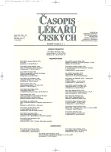Methods for assessing the potential health risks of traces of pharmaceuticals in drinking water
Authors:
František Kožíšek 1,2; Hana Jeligová 1
Authors‘ workplace:
Státní zdravotní ústav Praha, Centrum zdraví a životního prostředí, Oddělení hygieny vody
1; Univerzita Karlova v Praze, 3. lékařská fakulta, Ústav obecné hygieny
2
Published in:
Čas. Lék. čes. 2012; 151: 5-8
Category:
Review Articles
Overview
Increasing consumption of pharmaceuticals leads also to higher release of its non-metabolized residues into environment, mostly hydrosphere. Some of these substances may reach also processed drinking water. Although it is found in traces, it causes public concern as it can represent a non-targeted and unwanted medication. Toxicologists and public health authorities are appealed to assess potential health risks carefully and to communicate the risk adequately to public. As health risks assessment of environmental exposure to pharmaceuticals is a new field of expertise, its methodology has not been unified and standardized yet, but several different procedures have been proposed and used. The paper provides overview of these methods.
Key words:
pharmaceuticals, drinking water, exposure, risk assessment, human health.
Sources
1. Bound JP, Voulvoulis N. Household disposal of pharmaceuticals as a pathway for aquatic contamination in the United Kingdom. Environ Health Perspect 2005; 113: 1705–1711.
2. Kümmerer K. Pharmaceuticals in the environment: scope of the book and introduction. In: Pharmaceuticals in the Environment: Sources, Fate, Effects and Risks. Heidelberg: Springer 2004; 3–12.
3. Kožíšek F, Čadek V, Jeligová H. Výskyt humánních léčiv v pitných vodách. SOVAK – Časopis oboru vodovodů a kanalizací 2010; 19(3): 71–75.
4. Webb S, Ternes T, Gibert M, Olejniczak K. Indirect human exposure to pharmaceuticals via drinking water. Toxicol Lett 2003; 142: 157–167.
5. WHO. Pharmaceuticals in Drinking-water. WHO/HSE/WSH/ /11.05. World Health Organization, Geneva: 2011; 49 s.
6. DWI. Desk based review of current knowledge on pharmaceuticals in drinking water and estimation of potential levels. Final report prepared by Watts and Crane Associates for Drinking Water Inspectorate, Department for Environment, Food and Rural Affairs, London: 2007 (Defra Project Code: CSA 7184/WT02046/DWI70/2/213; http://dwi.defra.gov.uk/research/ completed-research/reports/dwi70-2-213.pdf).
7. Schulman LJ, Sargent EV, Naumann BD, et al. A human health risk assessment of pharmaceuticals in the aquatic environment. Hum Ecol Risk Assess 2002; 8: 657–680.
8. Cunningham VL, Binks SP, Olson MJ. Human health risk assessment from the presence of human pharmaceuticals in the aquatic environment. Regul Toxicol Pharmacol 2009; 53(1): 39–45.
9. Schwab BW, Hayes EP, Fiori JM, Mastrocco FJ, Roden NM, et al. Human pharmaceuticals in US surface water: a human health risk assessment. Regul Toxicol Pharmacol 2005; 42(3): 296–312.
10. NRMMC, EPHC, NHMRC. Australian guidelines for water recycling: managing health and environmental risks (PHASE 2). Augmentation of drinking water supplies. Natural Resource Management Ministerial Council, Environment Protection and Heritage Council and National Health and Medical Research Council 2008 (http://www.qwc.qld.gov.au/prw/pdf/agwr-augmen tation-drinkingwater-supplies-08-05.pdf).
11. Snyder SA, Trenholm RA, Snyder EM, Bruce GM, Pleus RC. Toxicological relevance of EDCs and pharmaceuticals in drinking water. AwwaRF Project 3085. Denver: Awwa Research Foundation 2008.
12. Travis KZ, Pate I, Welsh ZK. The role of the benchmark dose in a regulatory context. Regul Toxicol Pharmacol 2005; 43: 280–291.
13. Dieter HH, Mückter H. Regulatorische, gesundheitliche und ästhetische Bewertung sogenannter Spurenstoffe im Trinkwasser unter besonderer Berücksichtigung von Arzneimitteln. Bundesgesundheitsbl-Gesundheitsforsch-Gesundheitsschutz 2007; 50: 322–331.
14. Kümmerer K, Al-Ahmad A. Estimation of the cancer risk to humans resulting from the presence of cyclophosphamide and ifosfamide in surface water. Environ Sci Pollut Res 2010; 17: 486–496.
15. Cramer GM, Ford RA, Hall RL. Estimation of toxic hazard – a decision tree approach. Food Chem Toxicol 1978; 16: 255–276.
16. Munro IC, Ford RA, Kennepohl E, Sprenger JG. Correlation of structural class with no-observed effect levels: a proposal for establishing a threshold of concern. Food Chem Toxicol 1996; 34: 829–867.
17. Kroes R, Renwick AG, Cheeseman M, Kleiner J, Mangelsdorf I, et al. Structure-based thresholds of toxicological concern (TTC): guidance for application to substances present at low levels in the diet. Food Chem Toxicol 2004; 42(1): 65–83.
18. Caldwell DJ, Mastrocco F, Nowak E, Johnston J, Yekel H, et al. An assessment of potential exposure and risk from estrogens in drinking water. Environ Health Perspect 2010; 118(3): 338–344.
19. Stanford BD, Trenholm RA, Holady JC, Vanderford BJ, Snyder SA. Estrogenic activity of US drinking waters: A relative exposure comparison. Journal AWWA 2010; 102(11): 55–65.
20. Christensen FM. Pharmaceuticals in the environment – a human risk? Regul Toxicol Pharmacol 1998; 28: 212–221.
21. Bewertung der Anwesenheit teil- oder nicht bewertbarer Stoffe im Trinkwasser aus gesundheitlicher Sicht. Empfehlung des Umweltbundesamtes nach Anhörung der Trinkwasserkommission beim Umweltbundesamt. Bundesgesundhbl-Gesundheitsforsch-Gesundheitsschutz 2003; 45: 249–251.
22. Pomati F, Orlandi Ch, Clerici M, Luciani F, Zuccato E. Effects and interactions in an environmentally relevant mixture of pharmaceuticals. Toxicol Sci 2008; 102: 129–137.
Labels
Addictology Allergology and clinical immunology Angiology Audiology Clinical biochemistry Dermatology & STDs Paediatric gastroenterology Paediatric surgery Paediatric cardiology Paediatric neurology Paediatric ENT Paediatric psychiatry Paediatric rheumatology Diabetology Pharmacy Vascular surgery Pain management Dental HygienistArticle was published in
Journal of Czech Physicians

- Metamizole vs. Tramadol in Postoperative Analgesia
- Metamizole at a Glance and in Practice – Effective Non-Opioid Analgesic for All Ages
- What Effect Can Be Expected from Limosilactobacillus reuteri in Mucositis and Peri-Implantitis?
- The Importance of Hydration in Wound Healing
Most read in this issue
- The history of medicine in the ancient time
- Catheter related blood stream infections – prevalence and interventions
- Statin-ezetimibe combination in hyperlipidemia treatment
- Endoscopy simulator for training in digestive endoscopy
